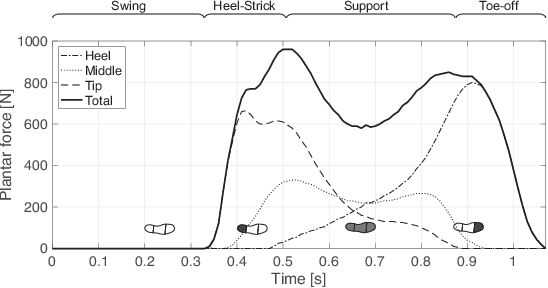Mikihisa Nagashima
Control of Walking Assist Exoskeleton with Time-delay Based on the Prediction of Plantar Force
Jul 17, 2020



Abstract:Many kinds of lower-limb exoskeletons were developed for walking assistance. However, when controlling these exoskeletons, time-delay due to the computation time and the communication delays is still a general problem. In this research, we propose a novel method to prevent the time-delay when controlling a walking assist exoskeleton by predicting the future plantar force and walking status. By using Long Short-Term Memory and a fully-connected network, the plantar force can be predicted using only data measured by inertial measurement unit sensors, not only during the walking period but also at the start and end of walking. From the predicted plantar force, the walking status and the desired assistance timing can also be determined. By considering the time-delay and sending the control commands beforehand, the exoskeleton can be moved precisely on the desired assistance timing. In experiments, the prediction accuracy of the plantar force and the assistance timing are confirmed. The performance of the proposed method is also evaluated by using the trained model to control the exoskeleton.
 Add to Chrome
Add to Chrome Add to Firefox
Add to Firefox Add to Edge
Add to Edge